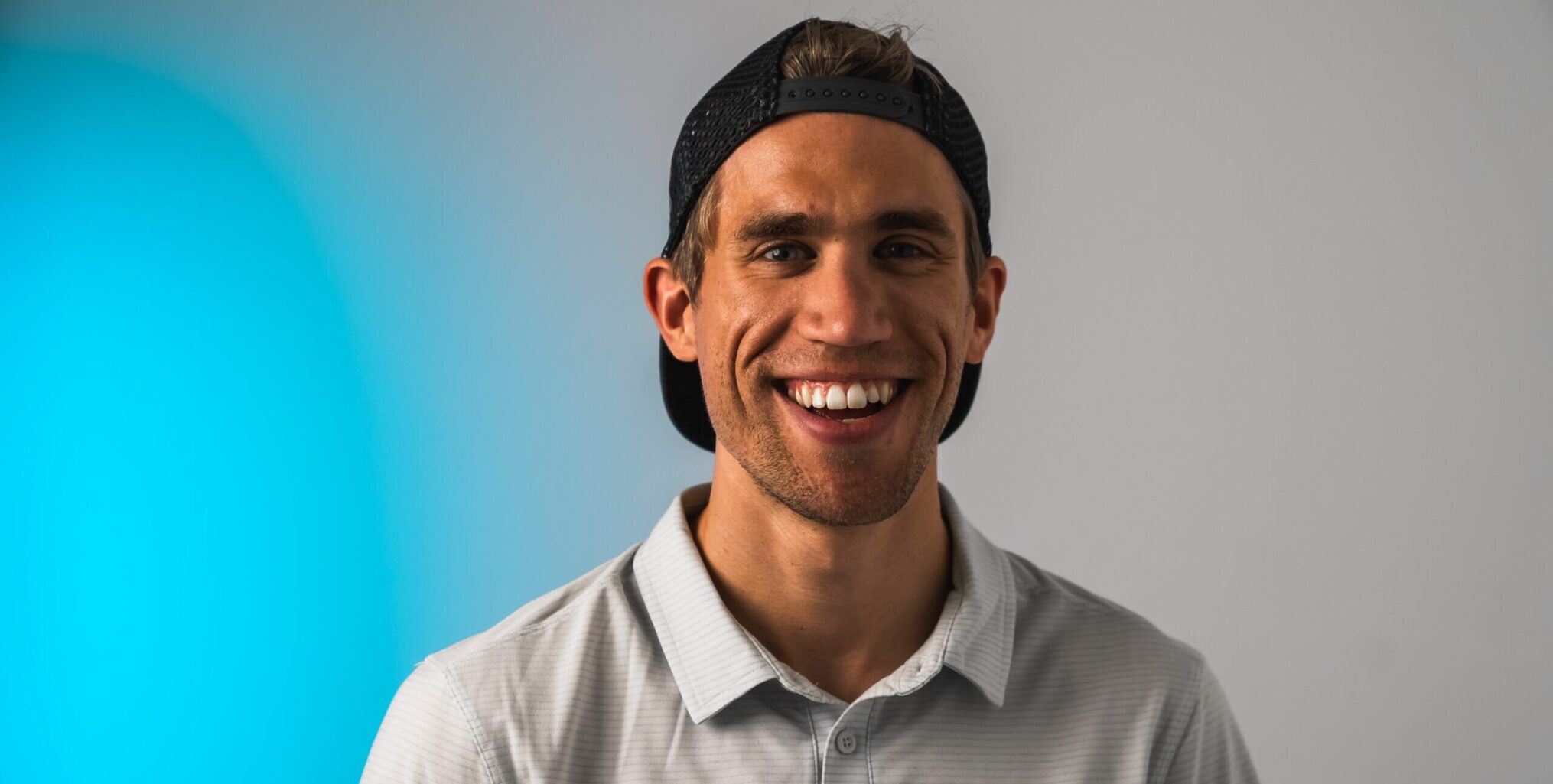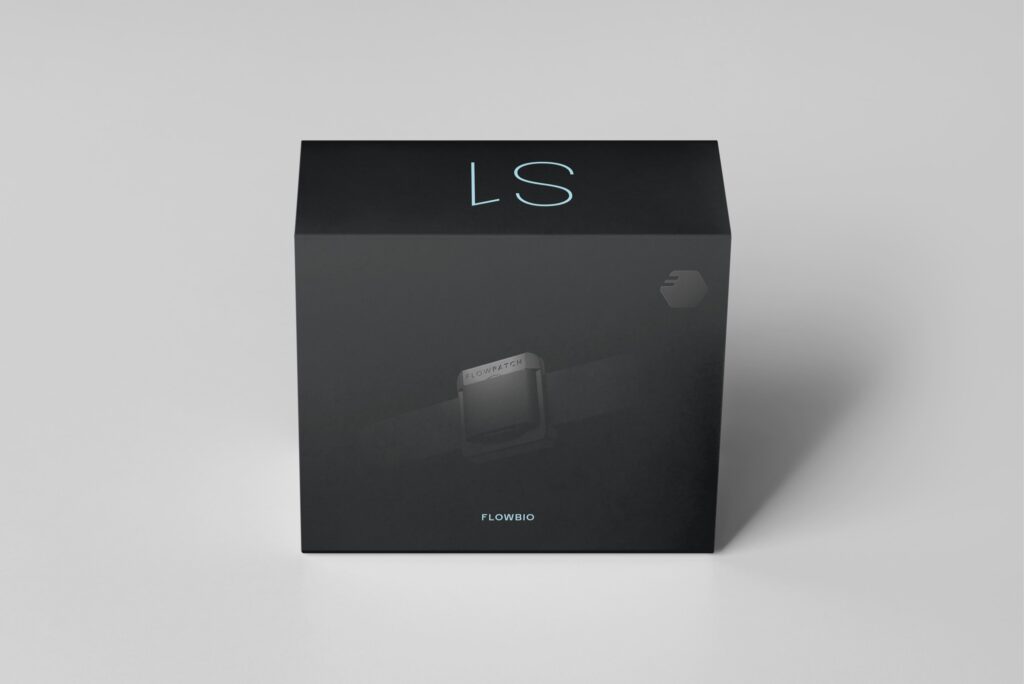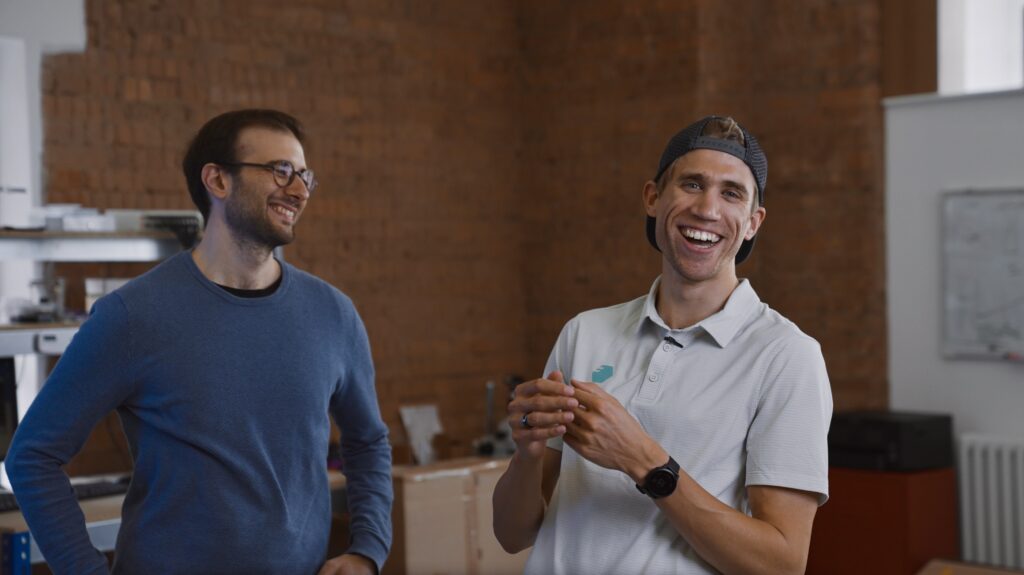Introduction to FLOWBIO’s Co-founder
Q: Could you introduce yourself and your startup?
A: I’m Stefan van der Fluit, one of the co-founders and CEO of FLOWBIO. What we’ve developed is the world’s most accurate hydration sensor for cyclists, triathletes, and runners.
Q: What inspired the idea behind your startup?
A: Well, it’s a bit personal. I’ve been a competitive athlete for the last 8 years, an amateur but always aiming for the age group podium. After I came in 1st at the Dutch national IRONMAN championships for my age group, I decided to get a coach to see what I could achieve with professional guidance. My coach, a former Olympian and domestique for the Brownlee brothers, and I aimed to take my performance to the professional level. I dedicated three months to this goal, stepping away from my job at Facebook to focus fully on training. However, I faced a significant challenge beyond the isolation and desire for intellectual stimulation: I constantly felt hungover with headaches, dizziness, and lethargy. This led to the discovery of the importance of electrolytes in hydration.
This realization sparked my interest in sports science and nutrition, leading me to consider further education in the field. However, realizing that traditional academic paths weren’t for me, I chose a more hands-on approach to solve my problem. About four years ago, I met my co-founder, Giovanni, and together we started working on creating a solution. This led to the development of FLOWBIO’s hydration sensor, the S1, designed to address a widespread issue that affects around 65% of our target market. Essentially, the journey to solving my hydration problems inspired the foundation of FLOWBIO.
Why HAX?
Q: What led to your decision to join HAX?
A: Our journey to joining HAX was somewhat serendipitous. Our initial investor, who works closely with HAX for their deal flow, introduced us to the accelerator. Being one of the few hardware companies emerging from Entrepreneur First, we were automatically introduced to HAX as part of their partnership. It wasn’t a path we actively sought out; it more or less fell into our lap. Before this introduction, I wasn’t even aware of HAX, but I quickly learned that their program is invaluable, especially for first-time hardware founders. The sheer volume of unknowns in hardware development is daunting, and HAX offered a way to dramatically shorten the learning curve. Their support has been instrumental in our development process, providing insights and resources we couldn’t have accessed on our own.
HAX Application Process
Q: How did you navigate the application process for HAX?
A: No, we didn’t go through the typical user application process. We were fast-tracked directly to the investment committee, thanks to our association with Entrepreneur First (EF). Throughout our time with EF, we had regular check-ins with Duncan, a partner at EF and an avid cyclist himself, which created a natural connection. These check-ins were essentially our application process, as I believe EF was filling out the application on our behalf based on our progress.
Our situation was unique due to the HAX and EF relationship, where we were considered more of an idea than a fully formed company. This is quite different from other HAX investments, which typically involve companies that have been operational for some time. I’m not entirely sure about their investment criteria, but it’s clear they assess EF-associated startups differently.
Additionally, the mentoring we received was integrated with the EF program. Duncan and Garrett, the partners we worked with, were instrumental in our early development. Garrett, who was our day-to-day project manager and is ex-IDO like many on the HAX team, along with Duncan, provided invaluable guidance. They worked closely with us, helping to identify and de-risk our biggest challenges. Their involvement was crucial; we couldn’t have made it through those early stages without their support and expertise.
Inside HAX Accelerator
Q: What was your experience like participating in the HAX program?
A: Due to the COVID pandemic, our experience with the HAX program was quite atypical. Frankly, there wasn’t a structured program for us to follow. The most significant benefit we received from HAX during this time was financial support. The pandemic restrictions prevented us from traveling to Shenzhen for manufacturing insights and, being based in London, we couldn’t access local resources HAX typically provides because of their absence in the city.
However, it’s worth noting that this situation has evolved. HAX has since opened their headquarters in Newark, and I understand that Entrepreneur First companies are now able to participate more fully in the HAX program there. Despite these limitations, we did receive some support, such as assistance with industrial design projects to create lookalike models of our product.
Regarding mentorship, we had some access to mentors. Giovanni, my CTO, worked closely with Gi, who acted as a sort of CTO for us within HAX. She was instrumental in connecting us with suppliers and quick fabrication labs for rapid prototyping. Despite the lack of physical resources like office space or fabrication facilities through HAX due to the pandemic, we managed to secure our own office space sooner than anticipated to continue our development work.
Q: Can you explain how funding works with HAX?
A: HAX provides a set investment to each company that joins their program. When we joined, the arrangement included $100,000 in cash and an additional $250,000 in in-kind services. This package determines their equity ownership percentage in the startup. Furthermore, HAX has been exceptionally supportive in follow-on investments, contributing pro rata up to 20% in each funding round.
Since joining HAX, they have invested well over half a million dollars in our company over the last four years. In terms of facilitating connections with other investors, HAX is very proactive, but it requires initiative from the startups. They operate on a principle where you need to ask for what you need. If you’re seeking introductions to other investors, they ask you to draft a list of potential funds or partners. They then work off that list, indicating who they can introduce you to, have introduced you to, or cannot introduce you to, using a Google Sheet Tracker to manage this process. This approach has been instrumental in expanding our network and securing additional funding.
Achieving Milestones and Overcoming Challenges
Q: What was a significant milestone achieved during your time with HAX?
A: The development of our industrial design stands out as a crucial milestone we achieved with HAX. This phase was especially significant because it transformed our concept into something tangible. For investors and virtually anyone else, understanding and visualizing a product, particularly a wearable like ours, is challenging without a physical prototype. Our team could envision it, but conveying that vision to others was a different story.
Working on the industrial design allowed us to provide stakeholders with a physical model of our product. This was a game-changer in our fundraising efforts. Being able to hand someone a prototype and explain how it works, how users would interact with it, and what the user experience would be like made a profound impact. Suddenly, it all made sense to them. This approach not only facilitated our fundraising but also offered us a valuable lesson in product development for hardware startups. Creating a design that might not be the final product but closely represents the envisioned user experience is crucial. It bridges the gap between concept and reality, enabling others to grasp the essence of what we’re building.
Q: Were there any challenges you faced with the program, or anything you would change?
A: Reflecting on the challenges, especially due to COVID, I believe a more robust response from HAX would have been beneficial. Ideally, HAX could have leveraged their local networks in various markets to provide startups with access to fabrication and prototyping facilities at universities or similar institutions. This lack significantly impacted us; we had expectations for support that ultimately were not met, leading to delays and unmet needs during critical development phases.
Transparency and honesty from the program during such unprecedented times would have been greatly appreciated. A more open dialogue about the limitations faced and the adjustments to the program could have helped us manage our expectations better. For instance, offering reduced equity requirements in exchange for the diminished in-kind investment or facilitating access to local resources like Imperial College, UCL, or King’s College could have mitigated some of the challenges we faced. In retrospect, adapting to the constraints imposed by the pandemic with creative solutions and clear communication could have greatly improved our experience and potentially accelerated our progress despite the circumstances.
FLOWBIO’s Current Status and Future Milestones
Q: What is your company’s current status, and what milestones are you looking forward to?
A: Currently, we’re in an exciting phase as we’re shipping our product, and we have significant milestones ahead. One of the most notable is our participation in the Olympics this year. Through our partnership with Human Telemetrics, we aim to ensure everything runs smoothly with our hardware and software integration. This opportunity is essentially a massive marketing campaign for us, and uniquely, we’re being paid to be there, unlike most companies who spend millions for such exposure.
Another key milestone is the Tour de France, where some of our team riders will be wearing our product, the S1 (formerly known as the flow patch), marking it as a significant marketing opportunity. We’re also focusing on expanding the locations and channels where customers can purchase the S1, our rebranded product. Remarkably, just three weeks after launch, we’ve reached a point I didn’t expect us to hit for six to nine months in terms of supply and distributor demand. We’ve attracted a lot of interest from distributors wanting to bring our product to their local markets.
To navigate our rapid growth, we’ve brought on the founder and CEO of Science in Sport as our chairman. His expertise in scaling a company to over $100 million in revenue is invaluable, guiding us to build FLOWBIO into a profitable entity that doesn’t solely rely on VC funding. This strategy aims to make us self-sufficient, enabling us to fundraise on our terms rather than being at the mercy of market conditions. Given the challenges of building a consumer hardware sport wearable in the VC world, this direction is crucial for our independence and long-term success.
Our focus remains on building and delivering high-quality products, moving away from the VC-driven narrative towards practical, sustainable business growth. With these goals and milestones in sight, we’re positioning ourselves for success, learning from each step and mistake along the way.
Final Advice for Prospective HAX Applicants
Q: Do you have any advice for founders considering applying to HAX?
A: I would recommend applying to HAX, especially now that the program is fully operational again. For hardware founders, particularly if you’re in the early stages of your first venture, joining HAX can provide invaluable support and resources. The expertise and network you gain access to are critical components for success in the hardware space. So, if you’re on the fence about applying, I’d say it’s a no-brainer to go for it.
Moreover, regarding the equity HAX takes, it’s essential to view it from the perspective of value creation. Would you prefer to own 100% of nothing or a smaller percentage of a successful, valuable company? It’s a common dilemma, but the answer underscores the importance of not being overly protective of equity at the expense of growth opportunities. Hardware startups often experience more dilution than their software counterparts, which is a reality of the industry. Embrace it, and focus on building a successful company. Being adaptable and open to sharing equity for the right resources and support can significantly impact your startup’s trajectory.



